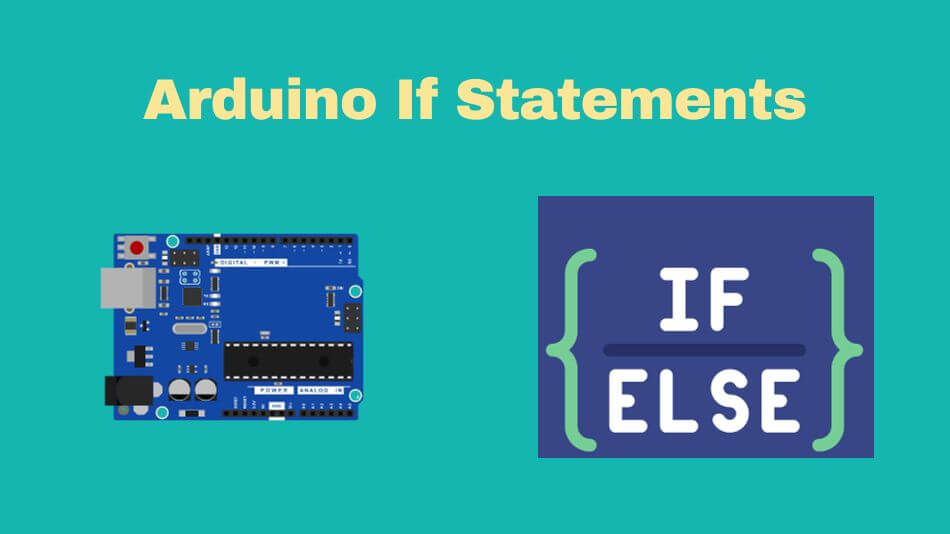Introduction

Arduino has transformed electronics and DIY projects with its versatility and user-friendliness, opening doors to creativity in electronics and DIY projects alike.
To take full advantage of its capabilities, one must master conditional programming through conditional statements; hence the term if statement.
In this comprehensive guide we’ll explore this form from its inception; including covering basic usage techniques as nicely as frequently asked questions along the way.
Understanding Arduino If Statements
What is an Arduino If Statement?
At its core, an Arduino if statement is a fundamental part of conditional programming. It allows your Arduino board to make decisions based on certain conditions. If a specified condition is met, the board will execute a particular set of instructions.
The Anatomy of an If Statement
Condition: An Arduino will perform various tests, from as simple as checking to see if a button has been pressed to comparing sensor data.
True Block: If the condition is met, this block’s code will be executed.
False Block: When the condition is false, code in this block will be executed (if provided). These Arduino If Statements allow for easy creation of complex logic.
Using Arduino If Statements
Simple If Statement
The simplest form of an Arduino if statement is used to check whether a condition is true. If it is, the code inside the if block is executed. Here’s a basic example:
The code
if (condition) { //code to execute if the condition is true }
If-Else Statement
An Arduino if-else statement adds an extra layer of logic. If the initial condition is true, the code within the if block runs. If it’s false, the code within the else block executes.
The code
if (condition) { // Code to execute if the condition is true } else { // Code to execute if the condition is false }
Nested If Statements
You can nest if statements inside each other for more complex decision-making. This is useful when you need to evaluate multiple conditions.
cppCopy code
if (condition1) { if (condition2) { // Code to execute if both conditions are true } }
Examples of Arduino If Statements
LED Control
Let’s say you want to control an LED based on a button press. You’d use an if statement like this:
The code
if (digitalRead(buttonPin) == HIGH) { digitalWrite(ledPin, HIGH); // Turn the LED on } else { digitalWrite(ledPin, LOW); // Turn the LED off }
Temperature Monitoring
In a more advanced scenario, you might use an if statement to monitor temperature and activate a fan if it gets too hot:
The code
if (temperature > 30) { digitalWrite(fanPin, HIGH); // Turn the fan on } else { digitalWrite(fanPin, LOW); // Turn the fan off }
Advanced Uses of Arduino If Statements
Multiple Conditions with Logical Operators
One of the strengths of Arduino if statements lies in their flexibility. Combining multiple conditions using logical operators makes your code more dynamic. Here’s an example of using && (AND) and || (OR) logical operators:
The code
if (condition1 && condition2) { // Code to execute if both condition1 and condition2 are true }
Complex Decision Trees
Sometimes, your projects may require intricate decision trees. This is where nested if statements and else-if come into play. With else-if statements, you can evaluate multiple conditions sequentially. Here’s an example:
The code
if (condition1) { // Code to execute if condition1 is true } else if (condition2) { // Code to execute if condition2 is true } else { // Code to execute if none of the conditions are met }
Using Comparison Operators
You can employ comparison operators to create if statements that compare values. The common comparison operators are == (equal), != (not equal), > (greater than), < (less than), >= (greater than or equal to), and <= (less than or equal to). For example:
The code
if (value > 10) { // Code to execute if value is greater than 10 }
Troubleshooting and Debugging
Serial Communication for Debugging
Debugging is a crucial part of the process when working with Arduino if statements. The Serial library is your best friend for debugging.
You can use Serial.println() to print variables and messages to the Serial Monitor, helping you understand what your code is doing. This is invaluable for identifying issues and fine-tuning your conditions.
The code
Serial.begin(9600); // Initialize the Serial Monitor Serial.println(“Debug message: ” + variable); // Print a debug message
Properly Define Variables
A common mistake when using if statements need to be defining variables correctly. Make sure your variables have the correct data type and are initialized before using them in if conditions.
Frequently Asked Questions
How do I create custom conditions in Arduino if statements?
You can create custom conditions by using logical and comparison operators and functions that return boolean values.
Can I use if statements with sensors and actuators?
Absolutely. Arduino if statements are often used with sensors to trigger actions, such as turning on a motor, based on specific sensor readings.
Are there limitations to the number of if statements in an Arduino sketch?
Arduino memory constraints, such as RAM and program memory, may limit the number of if statements and the complexity of your code. Be mindful of resource usage when creating intricate projects.
Can I nest if statements indefinitely?
While you can nest if statements, be cautious about excessive nesting; it can make your code harder to read and maintain. Consider using alternative structures like switch-case for more complex decision-making.
Conclusion
The Arduino if statement is the cornerstone of conditional programming in microcontrollers. Mastering its use opens creative possibilities, allowing you to build responsive, intelligent, and interactive projects.
By understanding the basics, experimenting with logical and comparison operators, and using debugging tools like the Serial Monitor, you can easily navigate the complexities of Arduino if statements.
So, dive in, explore the endless possibilities, and let your creativity flourish with the Arduino if statement at your command. Happy coding!
